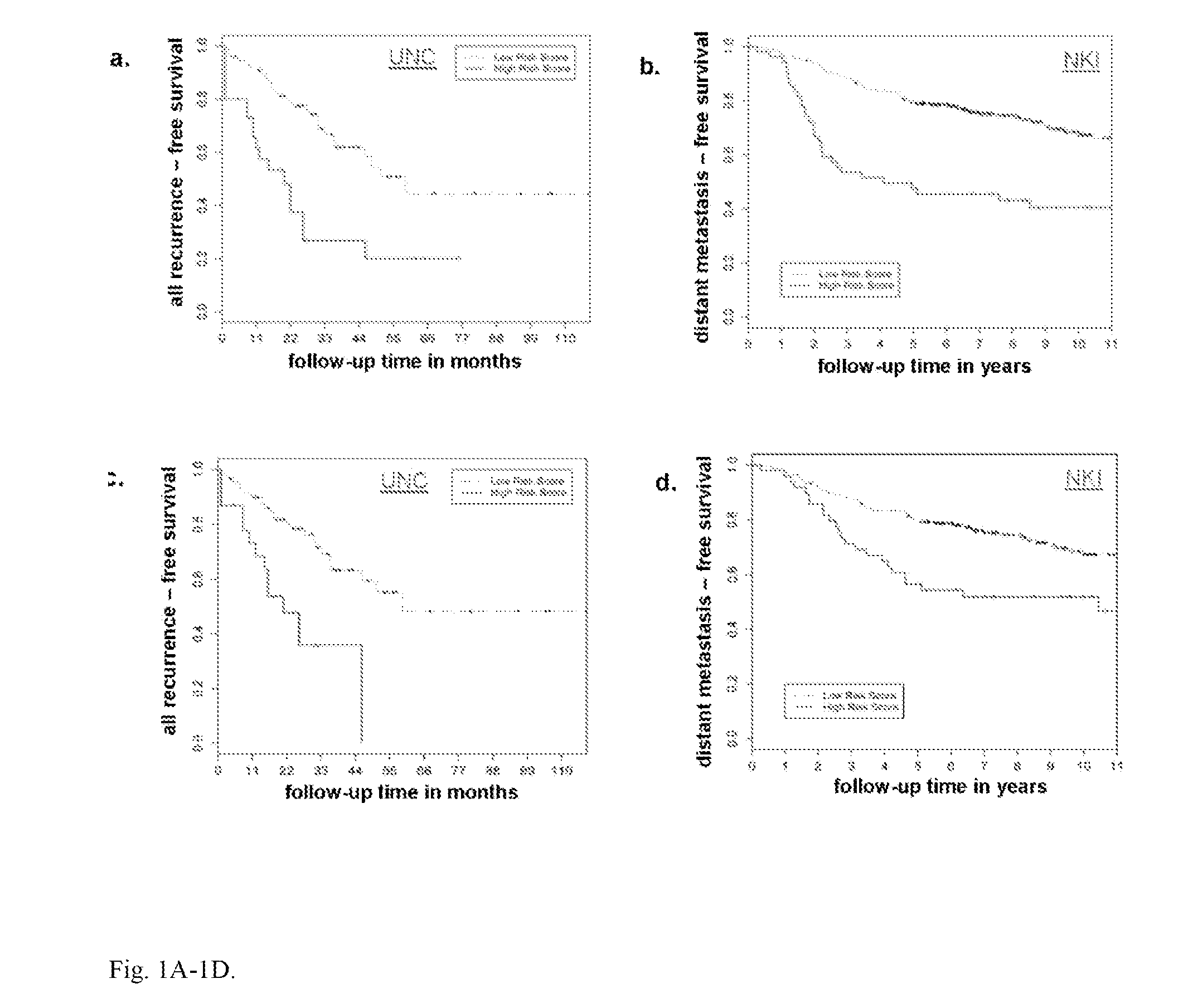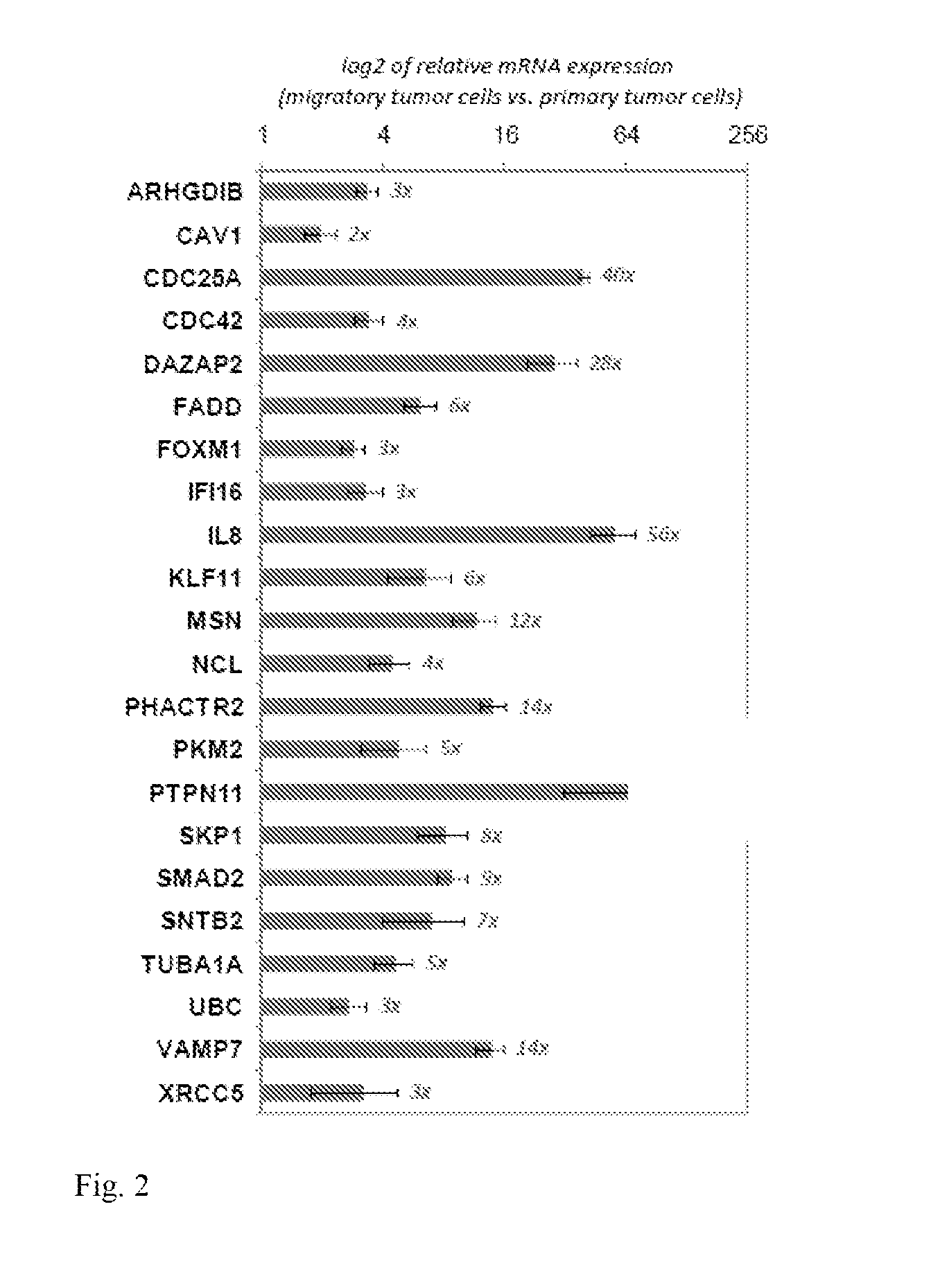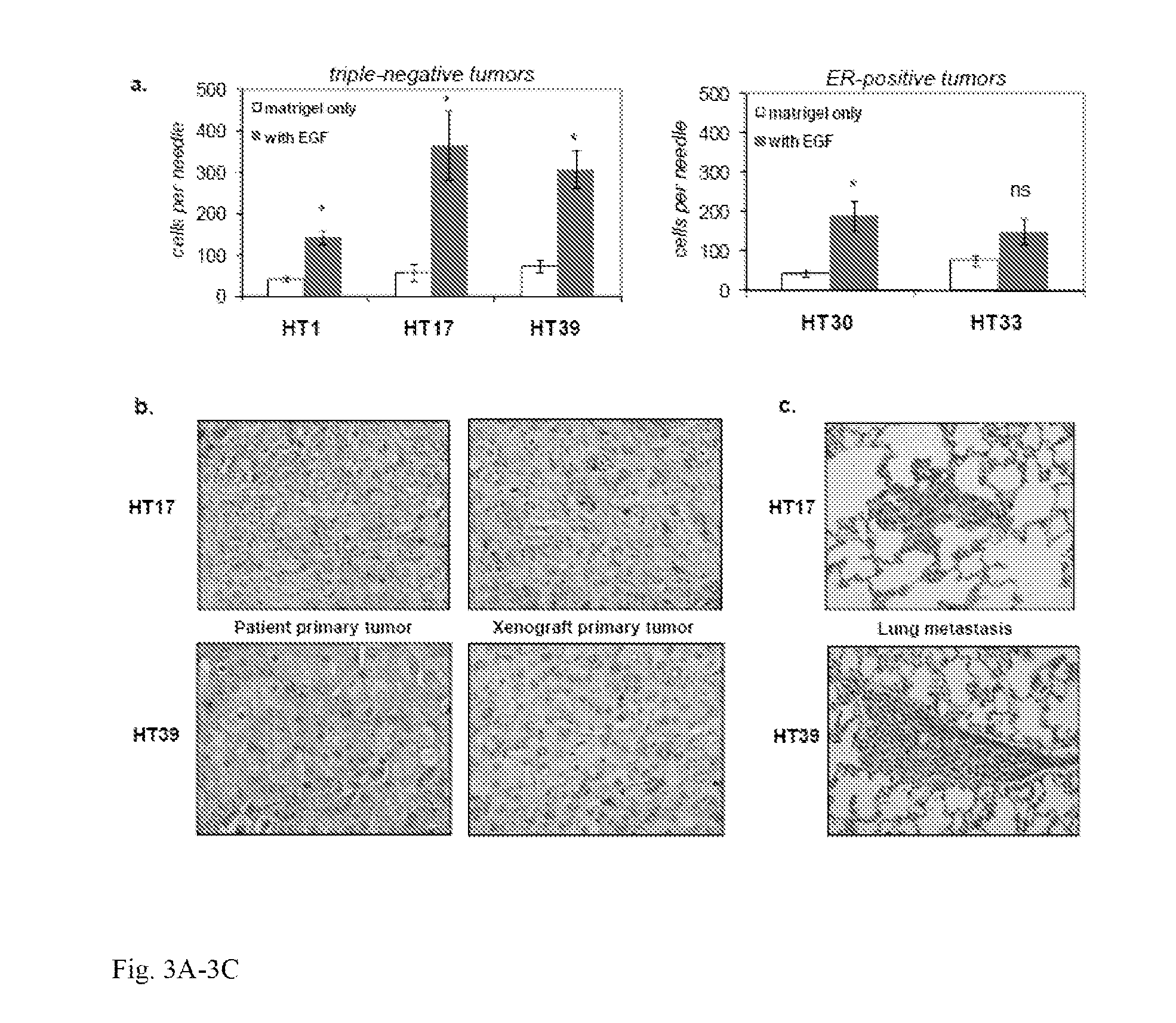Human invasion signature for prognosis of metastatic risk
a metastatic risk and human invasion technology, applied in the field of human invasion signature for prognosis of metastatic risk, can solve the problems of poor disease outcome for patients, high risk of metastasis, and little information about the molecular biology of the different cell types comprising the tumor tissue, so as to reduce the risk of recurrence of tumors, inhibit tumor invasion or duce risk, and inhibit tumor metastasis
- Summary
- Abstract
- Description
- Claims
- Application Information
AI Technical Summary
Benefits of technology
Problems solved by technology
Method used
Image
Examples
example 1
Introduction
[0074]Using novel assays, herein is identified a gene expression profile specific for invasion and dissemination in tumors, such as human primary breast tumors. Unsupervised analysis (i.e. an analysis which imports no knowledge about the samples being analyzed other than the expression data) of this human invasion signature shows that the migratory breast tumor cells use embryonic development gene networks in order to migrate, invade and intravasate inside the primary tumor, with TGF signaling being a central regulator of these upregulated phenotypes. In addition, this human invasion signature can significantly predict risk of metastasis in public breast cancer databases independently of breast cancer subtype. The importance of selected target genes for in vivo invasion and tumor cell dissemination, namely Interleukin-8 and PTPN11, was functionally verified using both cell line and patient derived primary breast tumors. This gene expression profile identified is of value...
example 2
[0098]Inhibition of specific genes from the human invasion signature abrogates invasion and hematogenous dissemination in breast tumors in vivo. Next the requirement of specific genes from the HIS was tested for invasion and dissemination of breast tumor cells in vivo. To more effectively model a potential clinical approach, and to avoid experimental artifacts resulting from adaptation to shRNAs in primary cells (patient-derived tumors were passaged only in mice as whole tissue chunks and never cultured), the effect of acute injection of specific pharmacological inhibitors or neutralizing antibodies into mice was evaluated with established tumors. The central regulator TGFβ pathway was focused on, as well as the top upregulated genes of the HIS. Specifically, IL8 and PTPN11 were targeted, as they were the two most upregulated genes by real-time PCR validation (FIG. 11), with a 56-fold and 80-fold mRNA expression increase in the migratory tumor cells respectively. IL8 (or CXCL8) was ...
PUM
| Property | Measurement | Unit |
|---|---|---|
| diameter | aaaaa | aaaaa |
| Cell Morphology | aaaaa | aaaaa |
| Nucleic Acid Metabolism | aaaaa | aaaaa |
Abstract
Description
Claims
Application Information
 Login to View More
Login to View More - R&D
- Intellectual Property
- Life Sciences
- Materials
- Tech Scout
- Unparalleled Data Quality
- Higher Quality Content
- 60% Fewer Hallucinations
Browse by: Latest US Patents, China's latest patents, Technical Efficacy Thesaurus, Application Domain, Technology Topic, Popular Technical Reports.
© 2025 PatSnap. All rights reserved.Legal|Privacy policy|Modern Slavery Act Transparency Statement|Sitemap|About US| Contact US: help@patsnap.com



